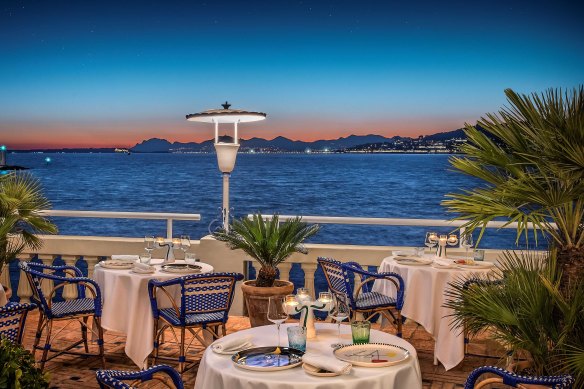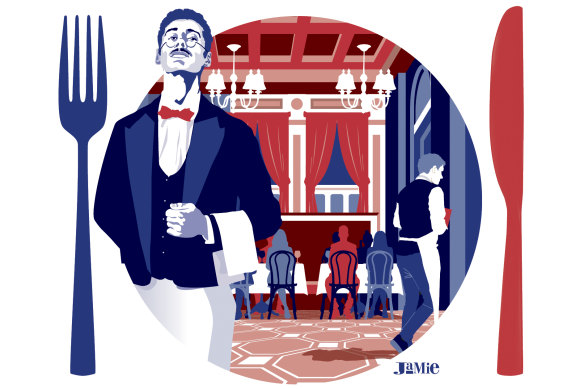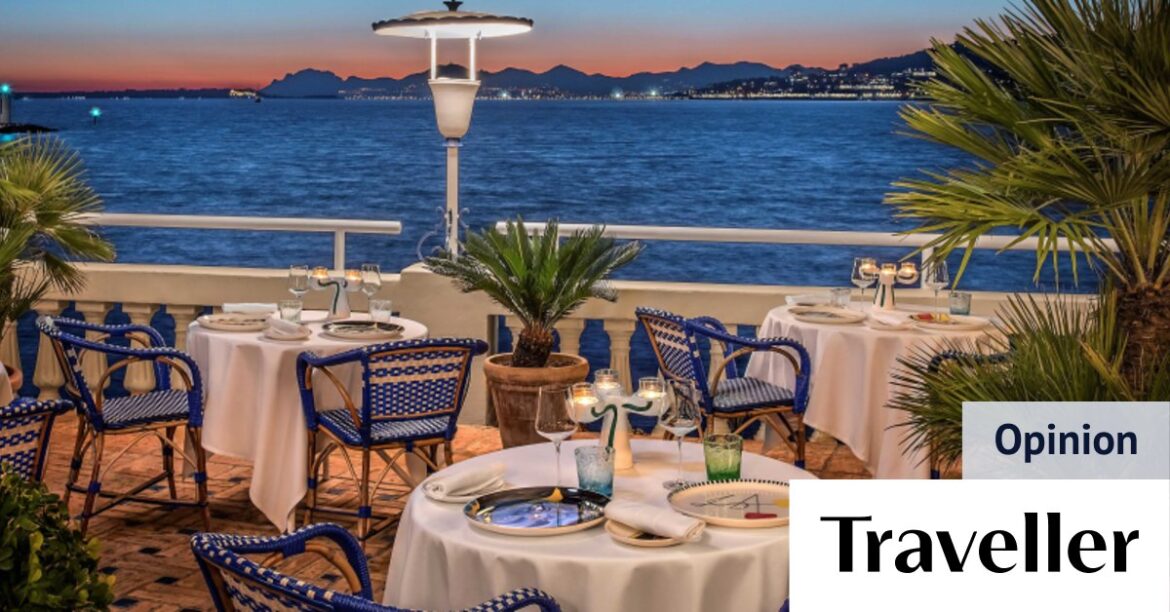Recently I dined at La Passagere, the Michelin-starred restaurant at Hotel Belles Rives on the French Riviera, where chef Aurelien Vequaud has been causing a stir with his innovative approach to fish and seafood.
A sense of occasion pervades Michelin dining in France, and this was no exception, with a grand art deco room, glittering chandeliers, and two layers of starched tablecloth, one blue, one white. On my table, three candles flickered on a porcelain candlestick that looked as if it might have been designed by Picasso.

The Mediterranean glimmers beyond the arched windows at La Passagere.Credit: Hotel Belles Rives
Like the backdrop to an operetta, glorious blue views of the Mediterranean glimmered beyond the arched windows of the Belles Rives, adding to the impression I always have when enjoying haute cuisine in France: that I’ve walked onto a stage set.
I feel like an extra, not quite getting the bigger picture. The know-all waiters have the main parts. They glide around like acolytes in stylish suits, and everything they murmur – “Still or sparkling?”; “Would you like more pepper?” – sounds like a metaphysical question.
Nothing is normal with posh dining in France. Even though I speak French, I seldom have much idea what I’m eating. Only experts could stay on top of the culinary vocabulary: cartouche, chiffonade, confit, consomme and coulis barely launch you into the alphabet.
Already before my meal at La Passagere has begun, I’m challenged by prefou, not a word I’ve come across before. The waiter informs me that it’s a type of bread from the Vendee, made without yeast.

Credit: Jamie Brown
But ignorance doesn’t change the taste buds. This prefou tastes like the lovechild of brioche and croissant, and has a flaky, buttery exterior studded with crispy confit garlic slices.
Don’t be put off experiencing haute cuisine just because you’re intimidated by the vocabulary. The French are sometimes just as puzzled because what turns up on the plate is often unexpected.

